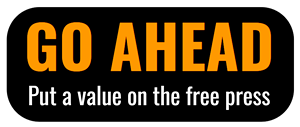In the Lewiston-Clarkston Valley and Moscow-Pullman, the eclipse begins at 9:12 a.m. Monday, reaches a deep partial eclipse at 10:27 a.m., and ends around 11:47 a.m.
Last January, a friend in my hometown shared a Facebook post about how Idaho Falls would be one of the best sites in the country to see 2017’s total solar eclipse.
“Finally,” I said to myself, “being from Idaho Falls pays off.”
I had no idea then what a big deal it would become.
Located within the path of totality, Idaho Falls is a designated “Official NASA Observation Site” and residents are being told to expect 100,000 to 500,000 visitors from around the globe. At recent community meetings residents were urged to stock up on food, gas and cash, limit driving and consider posting “No Parking” or “Private Property” signs.
I’m looking forward to seeing a total eclipse there and all the associated phenomenon, including what will likely be the biggest influx of people the town has ever seen. I’d like to invite 360 readers to share their eclipse-related photos with us by using the hashtag #360 on social media or uploading photos to inland360.com. If you follow us on Facebook or Instagram this week or share photos we’ll send you an Inland 360 limited edition sticker if you also send your mailing address to contests@inland360.com.
Tips on watching and photographing the eclipse:
North central Idaho will have a deep partial eclipse. If you want to look directly at the eclipse you must use proper eye protection to save your retinas from permanent damage. Sunglasses are not enough. Cameras, telescopes, binoculars and other optical devices must also be equipped with special solar filters on the sun side of the device. If you don’t have eclipse glasses or a viewer, check out the NASA website for ways to safely view the eclipse indirectly.
Can you photograph the eclipse with your smartphone? Yes, but the results might not be what you expect. Without a telephoto lens the sun will be a distant dot. It’s not advisable to point your smartphone camera at the blazing, un-eclipsed sun for an extended time without putting a filter over the lens. Only if the sun is completely eclipsed is it safe to look at and photograph. Photos of friends and family in their eclipse gear might better preserve the moment. Here are NASA's five tips for great eclipse photos.

















